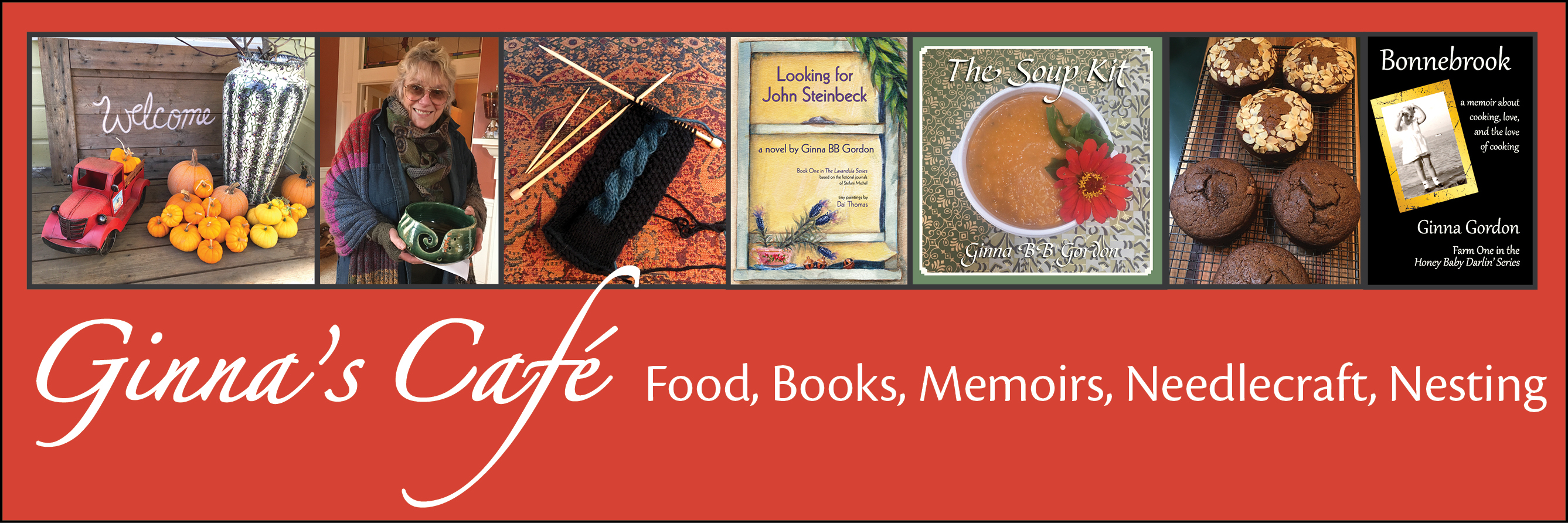Clear Vegetable Stock
Makes 4 quarts
2 carrots, cut in large chunks
3 celery stalks, cut in large chunks
2 large white onions, quartered, skins on
1 head of garlic, halved
1 each rutabaga, parsnip, turnip, halved
2 bay leaves
1 teaspoon salt
4 quarts water
Brush and clean the vegetables and place in a large
stockpot over medium heat. Add about 4 quarts water. Toss
in the bay leaves and salt and allow it to slowly come to a
simmer. Lower the heat to medium-low and gently simmer
for 3 hours, partially covered.
Carefully strain the stock through a fine sieve into
another pot to remove the vegetable solids. Use the stock
immediately or if you plan to store it, place the pot in a
sink full of ice water and stir to cool down the stock. Cover
and refrigerate for up to one week or freeze in containers.
Dark Vegetable Stock
Makes four quarts
Use this stock when a deep color and strong, smoky
flavors will enhance the recipe, like a vegetarian version
of French Onion Soup. It can be kept for up to 5 days in the
refrigerator, or frozen for up to 2 months.
2 yellow onions, unpeeled, quartered
6 shallots
8 cloves garlic, unpeeled
1 carrot, washed,
brushed and cut in half
six stalks celery, cut in half
2 each parsnips, turnips, rutabagas,
washed, brushed and cut in half
5-6 quarts water
salt and pepper
lemongrass stalk
Preheat an oven to 400!
Spread the vegetables on a baking sheet. Toss lightly with
olive oil, salt and pepper. Place in the oven and roast,
turning the vegetables at least once during cooking, until
the vegetables are well darkened on some surfaces, about
55 minutes, using parchment preserves the pan.
Transfer the vegetables to a large stock pot and fill with
water. Bring barely to a boil, then reduce the heat to low
and simmer uncovered without allowing the water to
bubble, for about 3 hours. Don’t ever boil any stock—the
protein particles will start to separate and fall apart, making
the stock cloudy. The stock should be deeply colored and
very aromatic. Add more water if necessary. Strain through
a fine-mesh sieve into containers. Let cool. Cap tightly,
and refrigerate or freeze.

Makes 4 quarts
2 carrots, cut in large chunks
3 celery stalks, cut in large chunks
2 large white onions, quartered, skins on
1 head of garlic, halved
1 each rutabaga, parsnip, turnip, halved
2 bay leaves
1 teaspoon salt
4 quarts water
Brush and clean the vegetables and place in a large
stockpot over medium heat. Add about 4 quarts water. Toss
in the bay leaves and salt and allow it to slowly come to a
simmer. Lower the heat to medium-low and gently simmer
for 3 hours, partially covered.
Carefully strain the stock through a fine sieve into
another pot to remove the vegetable solids. Use the stock
immediately or if you plan to store it, place the pot in a
sink full of ice water and stir to cool down the stock. Cover
and refrigerate for up to one week or freeze in containers.
Dark Vegetable Stock
Makes four quarts
Use this stock when a deep color and strong, smoky
flavors will enhance the recipe, like a vegetarian version
of French Onion Soup. It can be kept for up to 5 days in the
refrigerator, or frozen for up to 2 months.
2 yellow onions, unpeeled, quartered
6 shallots
8 cloves garlic, unpeeled
1 carrot, washed,
brushed and cut in half
six stalks celery, cut in half
2 each parsnips, turnips, rutabagas,
washed, brushed and cut in half
5-6 quarts water
salt and pepper
lemongrass stalk
Preheat an oven to 400!
Spread the vegetables on a baking sheet. Toss lightly with
olive oil, salt and pepper. Place in the oven and roast,
turning the vegetables at least once during cooking, until
the vegetables are well darkened on some surfaces, about
55 minutes, using parchment preserves the pan.
Transfer the vegetables to a large stock pot and fill with
water. Bring barely to a boil, then reduce the heat to low
and simmer uncovered without allowing the water to
bubble, for about 3 hours. Don’t ever boil any stock—the
protein particles will start to separate and fall apart, making
the stock cloudy. The stock should be deeply colored and
very aromatic. Add more water if necessary. Strain through
a fine-mesh sieve into containers. Let cool. Cap tightly,
and refrigerate or freeze.

























